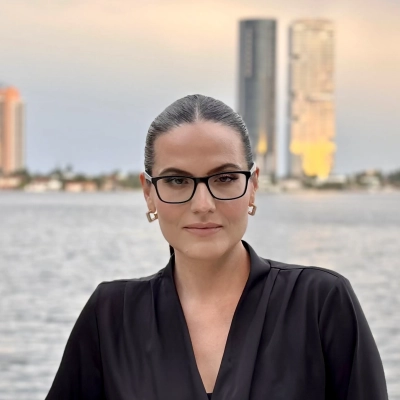3 Strategies for Adapting Your Therapeutic Approach When Your Orientation Isn't Working"
Therapists often face challenges when their preferred therapeutic approach fails to resonate with a client. This article explores effective strategies for adapting therapeutic techniques to better serve diverse client needs. Drawing on insights from experts in the field, readers will discover how to pivot their focus and build trust through unconventional methods when traditional approaches fall short.
- Adapt Therapy Approach to Client Needs
- Pivot from Cognitive to Emotional Focus
- Build Trust Through Unconventional Methods
Adapt Therapy Approach to Client Needs
I once worked with a client where cognitive-behavioral therapy (CBT) wasn't producing much progress. While CBT is often effective, this client grew frustrated and felt they were being analyzed rather than understood. Upon realizing that this approach was creating distance and insecurity rather than connection, I shifted toward a person-centered and narrative therapy style. With this approach, we focused less on techniques and more on active listening, validating, and inviting the client to tell their story in their own words. This allowed the client to feel seen and safe. Over time, this encouraged the client to begin exploring the underlying themes of self-worth that they had initially resisted in the more structured format of CBT. The outcome was a stronger therapeutic relationship, more authentic engagement, and greater openness to blending in skill-based strategies later. The lesson for me was that flexibility with clients is important, and sometimes the best technique is to adapt and meet the client where they are.

Pivot from Cognitive to Emotional Focus
One of the most humbling parts of being a sex therapist is recognizing when my primary theoretical orientation is not serving a client. In my experience, this became very clear with a couple I was working with who came in struggling with intimacy issues. I initially leaned heavily on cognitive behavioral strategies because I thought that identifying and reframing unhelpful thought patterns would open the door for progress. What I noticed, however, was that the couple became frustrated. They felt the work was too structured and that it kept them in their heads rather than helping them reconnect emotionally.
At that point, I shifted my approach to a more experiential, emotion-focused model. Instead of concentrating on their cognitions, I encouraged them to slow down and share what they were feeling in the moment with each other. We used guided dialogues where one partner would express an emotion and the other would reflect back what they heard, staying with the emotional experience rather than moving quickly to problem-solving. This created an entirely different dynamic. The couple began to access vulnerability that had been buried under years of defensiveness, and for the first time in our sessions, I could see genuine empathy between them.
The outcome was significant. Their intimacy started to rebuild, not because they eliminated every negative thought but because they felt safer expressing their emotions and needs. That experience reminded me how essential flexibility is in therapy. I think that clinging too tightly to one orientation can limit both the therapist and the client, while adapting to what the client needs in the moment can open pathways to real healing.
In my opinion, the best therapists are not defined by their preferred model but by their ability to know when to pivot. That adaptability keeps the focus on the client's growth rather than the therapist's comfort zone.
Build Trust Through Unconventional Methods
My initial approach with any client, and what I teach my team, is to meet them where they are. In the field of addiction recovery, you have to be flexible. It's not about imposing a one-size-fits-all model. I had a client come in who was mandated to treatment. They were resistant from the start, closed off, and their body language screamed, "I don't want to be here." My standard framework, which relies heavily on a client's willingness to engage in structured therapy, was going nowhere.
The sessions felt like I was talking to a wall. They would agree with everything I said but with no real connection or desire to change. We were following the textbook process, but the client was simply going through the motions. From a business perspective, that's not just ineffective—it's a waste of time and resources for both of us. The client wasn't getting help, and we weren't delivering on our promise of support.
I had to pivot. The alternative approach was to put the "theoretical" part on the back burner entirely. We started going for walks. The goal wasn't to talk about their addiction; it was just to build trust and human connection. I would talk about my life, a random story, or ask about their interests, anything to break down that wall. We spent a few weeks just building rapport, focusing on the simple, consistent act of showing up for them, with no agenda attached.
The outcome was subtle at first, but then it was undeniable. One day, during a walk, they just started talking—about their past, their family, their fears. That's when the real work began. The relationship we built allowed me to introduce therapeutic concepts in a way that resonated with them, because they finally trusted me. It's a powerful lesson. The best "theoretical orientation" in our field is often just being a person first, and an expert second. It's what allowed us to ultimately help them, and it's a non-negotiable part of how we operate here.



